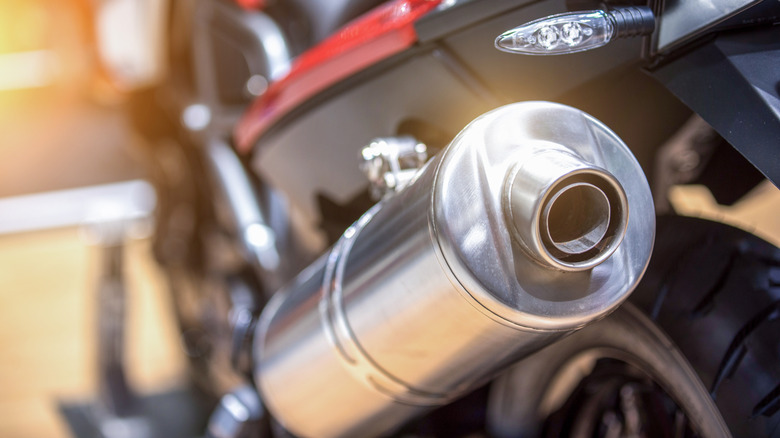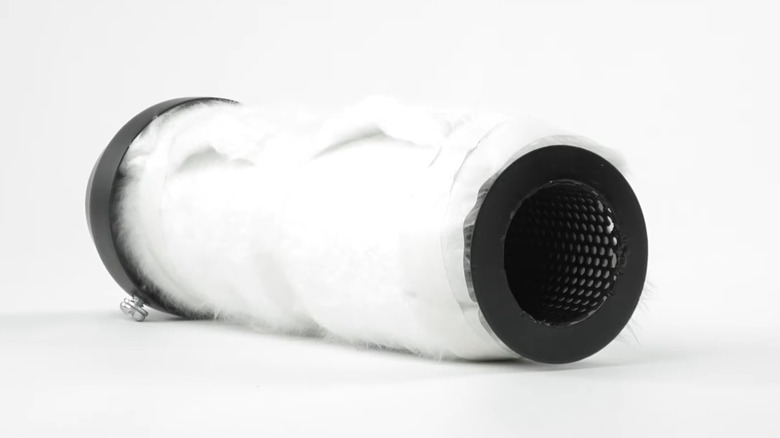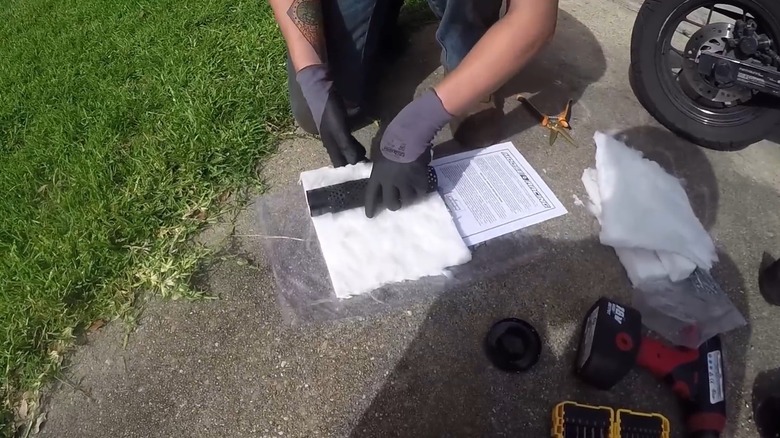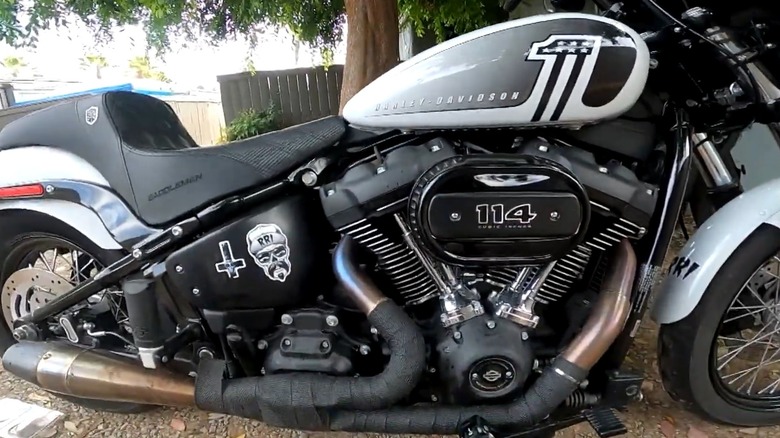How To Make Your Motorcycle Exhaust Quieter
We may receive a commission on purchases made from links.
While figures can vary, a motorcycle usually outputs around 85 to 95 decibels of noise traveling at slower speeds but can jump to over 110 decibels on the highway. For context, you would experience around 110 decibels standing next to a running chainsaw, which is considered quite loud. Extended exposure to noise levels of even 80 decibels can cause permanent damage to hearing, which is why it's important to purchase motorcycle helmets that help quiet down distracting road noise.
The exposed engine and aftermarket exhaust systems are just a few of the factors that contribute to motorcycle noise. Not all bikes are loud, such as these affordable electric motorcycles that won't draw the ire of neighbors who abhor the sound of elevated exhaust notes. For riders who are seeking to lower the volume of their bikes, there are a few effective methods, such as replacing the baffle in the muffler, using muffler packing, and wrapping the exhaust system pipes with fiberglass material.
Install a silencer baffle
A baffle is a cylindrical tube that slides inside the muffler. There are a variety of baffle types, including variants that reduce noise levels, some that make the bike louder, and others that create backpressure, improving performance. For a quieter exhaust, you'll want to choose a lengthier baffle, as the shorter options tend to add volume, not subtract it. Another characteristic of a silencing baffle is the hundreds of tiny holes present in the tube, which help disperse the sound as it travels through.
Fortunately, these sound-dampening baffles aren't a challenge to track down, as you can find several models available from the most popular exhaust brands for your motorcycle. Some of these silencers even include an additional dampening wrap around the exterior of the baffle to further cut down on loud exhaust notes. Installation complexity can vary depending on which brand of muffler you have equipped, but some options for replacement baffles can be as simple as loosening one screw, swapping out for a silenced variant, then tightening the screw to hold the part in place.
Muffler Packing
Another option to help lower the volume on a noisy motorcycle is to take your existing baffle, remove it, wrap it in muffler packing, secure it in place with wire and reinstall it. Muffler packing utilizes materials like fiberglass, which consists of a mat or collection of loose threads that contain thousands of small woven fibers, which react to and trap sound waves. Products like the FMF Racing 10589 Silencer muffler packing are inexpensive solutions to a loud exhaust and can even produce a benefit of a few extra horsepower.
Not only will muffler packing help lower the decibels coming out of the exhaust, but replacing the packing is also an important part of regular motorcycle maintenance, as the fibers do break down eventually in response to the pressurized waves experienced in the system. A few indications the muffler packing has degraded is any discoloration on the exterior or a hollow sound when knocking on the muffler. Not only does this fiberglass packing break down due to sound wave pressure, but it must also endure exceedingly high temperatures, requiring it to be replaced for optimum performance.
Fiberglass Wraps
If you don't want to take apart your muffler to replace or wrap the baffle, you can always use a product called exhaust wraps. Exhaust wraps come in rolls of several feet and allow you to cover the motorcycle exhaust pipes like a comprehensive bandage, wrapping and overlapping the header tubes. Since these wraps are made from sound-inhibiting material like fiberglass or stainless steel, not only do they pull heat away from the exhaust, cooling things down a bit, but they also help reduce sound transfer.
One of the reasons riders install these wraps has nothing to do with quieting the motorcycle but rather helping to prevent leg burns from the hot pipes running alongside the engine. A few points to remember when installing this product is that the fiberglass weave in the wrap will be very itchy if you get it on your skin, so gloves are important. Secondly, some steam or smoke may come off the wrap when the motorcycle is first started up after installation and the pipes get hot. This reaction is expected, and it's part of the process the material undergoes in order to function properly.



